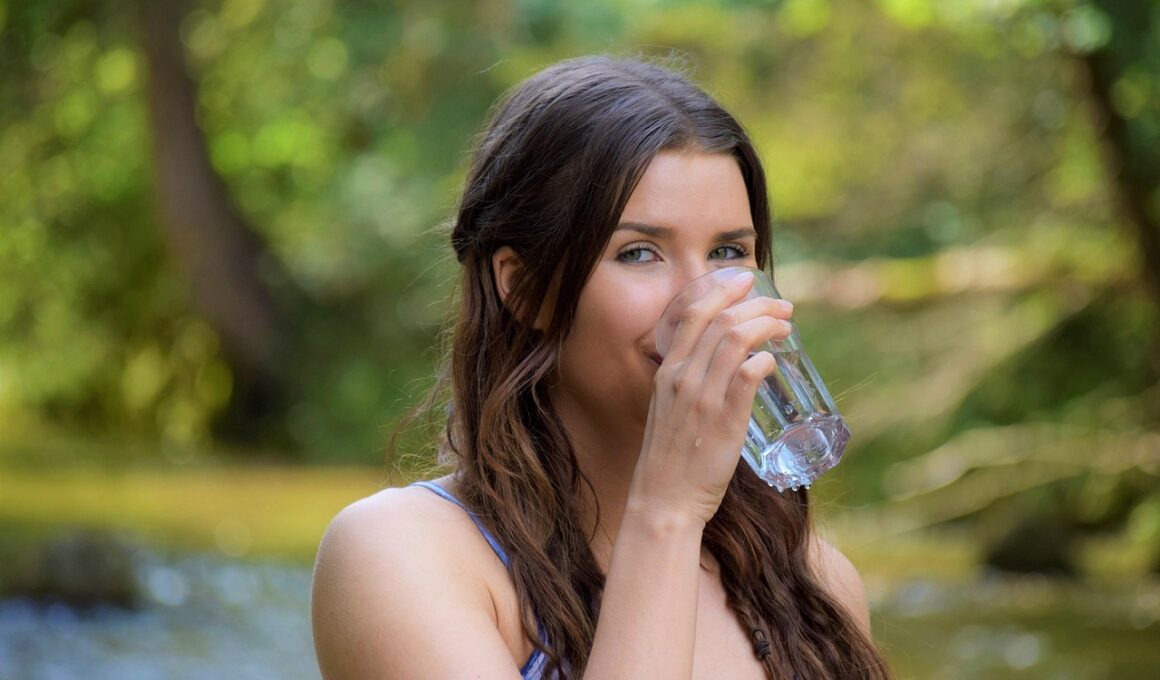Hydrotherapy Techniques for Post-Workout Recovery Outdoors
Outdoor workouts can be both invigorating and demanding, making proper recovery essential. Hydrotherapy techniques are excellent for post-workout recovery, utilizing water’s natural properties to enhance the healing process. These methods can alleviate muscle soreness, speed up recovery times, and enhance overall well-being. Integrating hydrotherapy into your routine allows you to maximize the benefits of your physical activity. You can choose from a variety of hydrotherapy techniques that vary in intensity and duration, making them suitable for various types of outdoor workouts. Regular use of these techniques can lead to improved performance and lower injury rates. It’s important to leverage the outdoor environment when applying these methods; natural water sources like rivers or lakes can serve as ideal venues. The refreshing effect of cold water can be especially beneficial after intense exercise sessions. Additional practices include contrast bathing, which alternates between warm and cold water. This method encourages circulation and can boost recovery further. Always remain mindful of your body’s signals and adjust water temperatures to suit your comfort level. Elevating hydration alongside hydrotherapy also assists in achieving optimal recovery.
One of the foundational hydrotherapy techniques is cold water immersion, often referred to as ice baths. Cold water immersion involves submerging the body in cold water, effectively reducing swelling and muscle soreness. This technique is particularly beneficial after high-intensity workouts as it lowers inflammation. To execute this method outdoors, locate a natural body of cold water or use a portable ice bath setup. Immerse yourself for about 10 to 15 minutes to achieve the desired benefit. Make sure to gradually lower your body into the cold water to prevent shock. Additionally, incorporating breathwork and mindfulness while submerged can further enhance recovery. You might consider wearing a thermal swimsuit to minimize discomfort from extreme temperatures. After immersion, remember to warm up your body gradually to ensure proper circulation. Another important element to consider is hydration, especially post-cold therapy, which can help replenish lost electrolytes. Utilize this technique effectively by making it a routine part of your outdoor workout recovery plan. Always consult with a professional if you’re unsure about your body’s reactions to cold therapy before you begin.
Warm Water Therapy
Warm water therapy is another effective hydrotherapy technique that promotes muscle relaxation and stress relief. Unlike cold water immersion, this method employs warm water to soothe sore muscles and enhance blood flow. Find a natural hot spring or use a hot tub if available in an outdoor setting. Spending time in warm water helps to alleviate tension, making it ideal after high-impact workouts or strength training sessions. Aim for a water temperature of about 100°F to 104°F to achieve relaxation without overheating. A soak lasting around 20 minutes can provide substantial relief and comfort. During this time, you can perform gentle stretching exercises to further enhance flexibility. The buoyancy of water also helps reduce strain on your joints, making warm water therapy particularly beneficial for those with injuries or chronic pain. Pair this technique with aromatherapy or calming music to create a serene atmosphere that amplifies the relaxing effects. It’s important to hydrate before and after warm water therapy to avoid dehydration. This method is excellent for revitalizing both the mind and body after an exhausting outdoor workout. Adequate recovery strategies are necessary for sustainable fitness progress.
Contrast bathing is a unique hydrotherapy technique that alternates between cold and warm water to promote healing. This approach encourages improved circulation, which can help in faster muscle recovery and reduce soreness. Look for a nearby lake and provide transition zones where you can control the water temperatures. Start by immersing your body in cold water for approximately three minutes, followed by warm water for five minutes. Repeat the cycle two to three times for optimal recovery benefits. The rapid change in temperatures stimulates your circulatory system and helps eliminate metabolic waste from your muscles. Regularly integrating contrast baths into your outdoor recovery routine can provide profound improvements in recovery rates. It’s crucial to listen to your body and modify the duration or temperature based on your individual preferences because the transition can be intense. Additionally, maintaining proper hydration during this process is essential for maximizing results. Hence, always carry refreshing drinking water or electrolyte-infused beverages to replenish lost fluids. This practice can ultimately lead to improved performance in your subsequent workout sessions and contribute to preventing injuries.
Cold Water Therapy Techniques
Cold water therapy encompasses a variety of methods, including localized cold packs and full-body immersion. For those who may not prefer full immersion, localized techniques can provide substantial relief. Use ice packs or cold towel wraps on specific muscle groups that feel sore after workouts. This localized approach reduces swelling in targeted areas while avoiding the shock that may come from full-body immersion. When applying ice packs, always wrap them in a cloth to prevent direct contact with the skin, which safeguards against ice burns. Limit application time to about 15-20 minutes as excessive exposure can result in negative effects. Pair localized cooling techniques with gentle stretches to prevent stiffness in the affected areas. This practice not only enhances recovery but can also significantly improve your range of motion. Keep in mind that regular application can assist in developing a routine while maintaining consistency in your recovery process. Choose the most comfortable approach based on your preferences and needs to ensure the best results. Finding the right balance will lead to a more effective outdoor workout recovery experience.
For those seeking more dynamic options, aquatic activities provide excellent opportunities for hydrotherapy. Activities such as swimming or water aerobics allow for low-impact exercises in a hydrotherapy setting. These activities promote movement in water while simultaneously providing a means of effective recovery. Engaging in swimming sessions post-workout will help relax your muscles while enhancing aerobic capacity. Moreover, the buoyancy of water helps alleviate joint stress, making it ideal for a broad range of fitness levels. Consider organizing group sessions with friends or fitness enthusiasts to make it more enjoyable. Use open-water swimming for a refreshing and physically challenging option that is also rewarding. As you swim, focus on controlled breathing to maximize relaxation and effectively flush out tension from your body. Always ensure the swimming area is safe and monitored to prevent accidents. Incorporating aquatic activities into your workout culture provides an engaging recovery experience while reinforcing the importance of community in fitness. Always check the weather conditions and ensure that you adhere to safety protocols when swimming outdoors.
Conclusion and Additional Tips
Implementing hydrotherapy techniques into your outdoor recovery routines can greatly enhance your post-workout experience. Techniques such as cold water immersion, warm water therapy, and contrast bathing provide opportunities to rejuvenate the body. Each method serves a unique purpose, targeting different aspects of muscle recovery. It is vital to tailor these techniques to your needs and preferences to achieve the best results. Additionally, consider always hydrating properly, as recovery is as much about fluid intake as it is about muscle recovery. Depending on the intensity of your workouts, electrolyte drinks can be highly beneficial. Furthermore, ensure that your outdoor recovery sessions are both consistent and enjoyable, as motivation plays a key role in fitness. Lastly, keep a journal documenting your recovery experiences with hydrotherapy, which can provide insights into which methods work best for you. This process allows for continuous improvement and adaptation of your recovery strategies. So whether you’re relaxing in a lake or utilizing cold packs, trust in the power of hydrotherapy to elevate your outdoor workout recovery.



